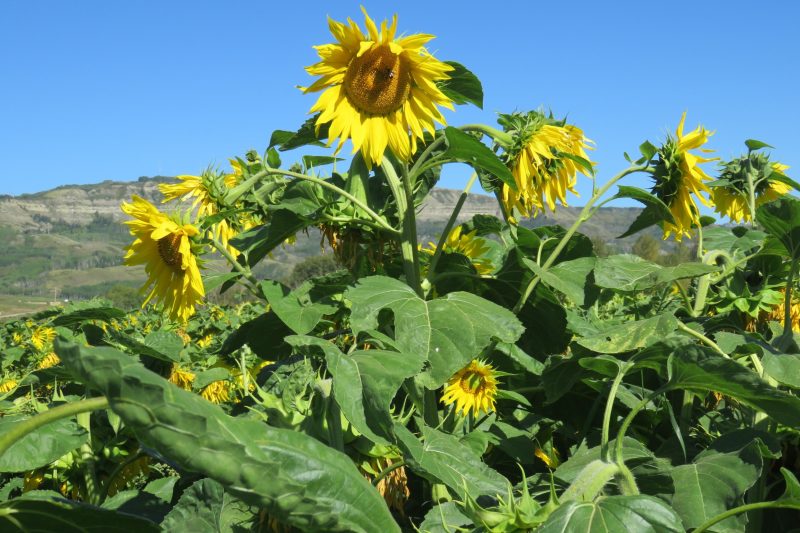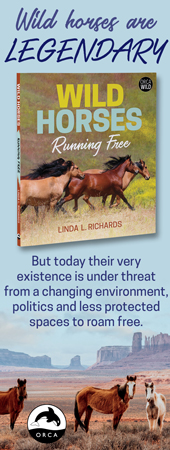#85 Flooding a Garden of Eden
February 11th, 2017
REVIEW: The Peace in Peril: The Real Cost of the Site C Dam
by Christopher Pollon (text) and Ben Nelms (photos)
Madeira Park: Harbour Publishing, 2016
$24.95 / 9781550177800
Reviewed by John Gellard
*
The 100 kilometres of the Peace River Valley between Hudson’s Hope and Fort St John has rich alluvial soil. Blessed with a relatively benign microclimate, it contains excellent farmland and is an invaluable wildlife habitat. For northern British Columbia, it’s as close to the Garden of Eden as you can get.
BC Hydro’s Site C Dam, under construction on the Peace River near Fort St John, threatens to end this fertile and little-known oasis. Hydro and the government it represents see the Peace River Valley as a commodity to be destroyed, as farmland to be blithely inundated. They are fixated on a new opportunity to expand transmission lines feeding into provincial electrical grids.
 Government and capital seem to have decreed that the Peace River Valley’s highest and best use is to be flooded and turned into a series of dams and sterile reservoirs with unstable banks awash with a generation’s worth of waterlogged forest debris. They see only short-term opportunities: a make-work project for transient politicians and for engineers whose very careers depend on the continuous damming of natural rivers.
Government and capital seem to have decreed that the Peace River Valley’s highest and best use is to be flooded and turned into a series of dams and sterile reservoirs with unstable banks awash with a generation’s worth of waterlogged forest debris. They see only short-term opportunities: a make-work project for transient politicians and for engineers whose very careers depend on the continuous damming of natural rivers.
To this end, premier Christy Clark has vowed that construction of the Site C Dam must be pushed past the “point of no return” before the election in May 2017.
Christopher Pollon and Ben Nelms, author and photographer of The Peace in Peril, canoed down the river in 2015, camping on some of the fifty wild wooded islands where moose, caribou, deer, and elk migrate and calve in relative safety from bears, cougars and wolves. They got to know farmers facing the loss of their third-generation family farms and First Nations people who might lose their homes and their three hundred-generation hunting and gathering grounds.
Ken and Arlene Boon own one of the homesteads that stand in the way of the new highway to the dam site. “The road goes right through our home,” says Arlene, whose grandfather once resisted eviction in that very spot. BC Hydro needs them to vacate immediately, though they will be allowed to rent back some of their land and farm it for a few years.
The Boon family farm looking south to pasture and grain field land to the Peace River, July, 2016. John Gellard photo.
The Boon farm is a classic example of what can be done in this gentle microclimate. Ken and Arlene Boon grow alfalfa and huge sunflowers on the flood plain and lease seven acres to Mike Van Zandwyk, who grows vegetables for the local market in Fort St. John. On a higher bench, the Boons grow oats and barley, and on the slopes below the boreal forest, they graze cattle.
Pollon and Nelms are careful to give a fair hearing to people who favour the Site C Dam. One of them, Vic Gouldie, is a trapper who worked for decades on dam projects. He stands to lose half his trap-line, but he has picked a spot to build himself a lakeside cabin once the reservoir is in place. He congratulates himself on his foresight. “Now that’s positive thinking!” he remarks.
Vic pokes fun at the “Paddle for the Peace,” an annual gathering that attracts thousands in early July. “These fucking idiots who come up here to save the Peace. They have a big rally and a weenie roast” (mock crying) “Oh, we shouldn’t. It will be gone forever.”
Vic’s dream of creating an “Okanagan of the North” seems a bit delusional, but Pollon treats his dream with respect — or at least neutrality.
A few young guys, also newcomers, feature in The Peace in Peril. Two are cruising timber for the upcoming clear-cutting. “There’s years of work here,” one of them enthuses. Another young fisherman on a weekend visit from the oil patch says, “The money’s amazing and it [the reservoir] might make the fishing better.”
These newcomers express a persistent delusional dream of lakeside living, with a blissful unawareness that the soft banks of the reservoir will slough for decades, just like huge Williston Lake upstream behind the Bennett Dam, which has prevented any significant use of the “lakeside.”
Damming is an industry of devastation. You can’t wave a magic wand to create a bucolic picture-perfect cottage country. And you don’t know what you’ve got till it’s gone.
Besides, rotting soil and vegetation in the reservoir will convert inorganic mercury to methyl mercury, which will poison the water and the fish.
Generally, Pollon conveys the impression that the dam is an abomination. He quotes a range of considered and expert opinion that agrees that it’s a bad idea. Harry Swain, past chairman of the Joint Review Panel, asserts that we don’t need the power and we’ll end up selling it at a loss.
Mark Eliesen, former CEO of BC Hydro, considers the Site C dam a “white elephant” that will mire Hydro so deeply in debt that Hydro itself might have to be sold off.
Agronomist Wendy Holm has a different objection. She argues that the land is too valuable to be sacrificed to a sterile megaproject and the industry it represents. The Peace Valley could produce enough fresh vegetables to feed a million people, not to mention grain and beef.
Holm is not alone. With plain common sense Mike Van Zandwyk, Bear Flat vegetable farmer, contends that, “With Site C, the jobs and the money will come and go. Then what? If more people farmed here, we would build the jobs without Site C.”

Beth, Mike Van Zandwyk’s partner, selling their Bear Flat vegetables at the Fort St. John market, August 2016. John Gellard photo.
Pollon also points to an apparent “scorched earth policy” on the government’s part: a twisted and deceitful logic that if you destroy enough of the ecology soon enough, there will be nothing left worth saving.
Such an ulterior motive is hard to prove; but as I write, the feller-bunchers are getting ready to clear cut the Watson Slough, breeding ground for 116 songbird species and sixty waterfowl species.
Pollon’s writing style is an engaging combination of facts and figures, history, adventure, and human interest; Nelms’s photographs are vivid and informative; the book’s production values are high.
Far from expert canoeists, Pollon and Nelms get into a few scrapes. They beach their rented canoe on a rocky shore in the dead of night only to awake in the morning to find themselves high and dry because of water level fluctuations from the Bennett Dam. They get chased by a Search & Rescue helicopter, having been reported missing because they forgot to call home.
Their escapades add excitement to the narrative — and their hair-raising misadventures remind us that this part of the Peace is still off the beaten track.
A pleasing coffee table book and a timely call to action, The Peace in Peril is also an excellent primer not only to what is left of the Peace River Valley, but also to the unstoppable march of capital and the willingness of the present provincial government to squander the miniscule percentage of British Columbia that is cultivable and productive for agriculture.
*
John Gellard spent his childhood in England and Trinidad, donated his adolescence to an English boarding school, earned an MA in Philosophy from the University of Western Ontario, and taught English in London, Ontario, for seven years. In 1973, he arrived in the West Kootenay where he felled and peeled pine logs on his “wild land” property and built a log cabin. Gravitating to the city, he taught drama for seven years at Vancouver Technical Secondary School. He still helps run writing workshops for students, notably (since 1993) an annual overnight retreat on Gambier Island. His articles have appeared in the Globe and Mail and the Watershed Sentinel. He takes an active interest in environmental issues and travels extensively in B.C. He lives among friends in Kitsilano and on Hornby Island, has two grown sons, and retired from teaching at Kitsilano Secondary School after being named Canada’s “Best High School Teacher” in a Maclean’s poll in August 2005.
*
The Ormsby Review. More Readers. More Reviews. More Often.
Reviews Editor: Richard Mackie
Reviews Publisher: Alan Twigg
The Ormsby Review is hosted by Simon Fraser University.
—
BC BookWorld
ABCBookWorld
BCBookLook
BC BookAwards
The Literary Map of B.C.
The Ormsby Review







Destruction of viable agricultural land for hydro electricity is, indeed, an abomination!
Agricultural land and the produce created from it are finite resources that should and must be protected from the idiocy of politicians. There are other ways to create electricity, but the land we have is all there is, or can be.
Yes, in all our British Columbia lives the river runs through it.